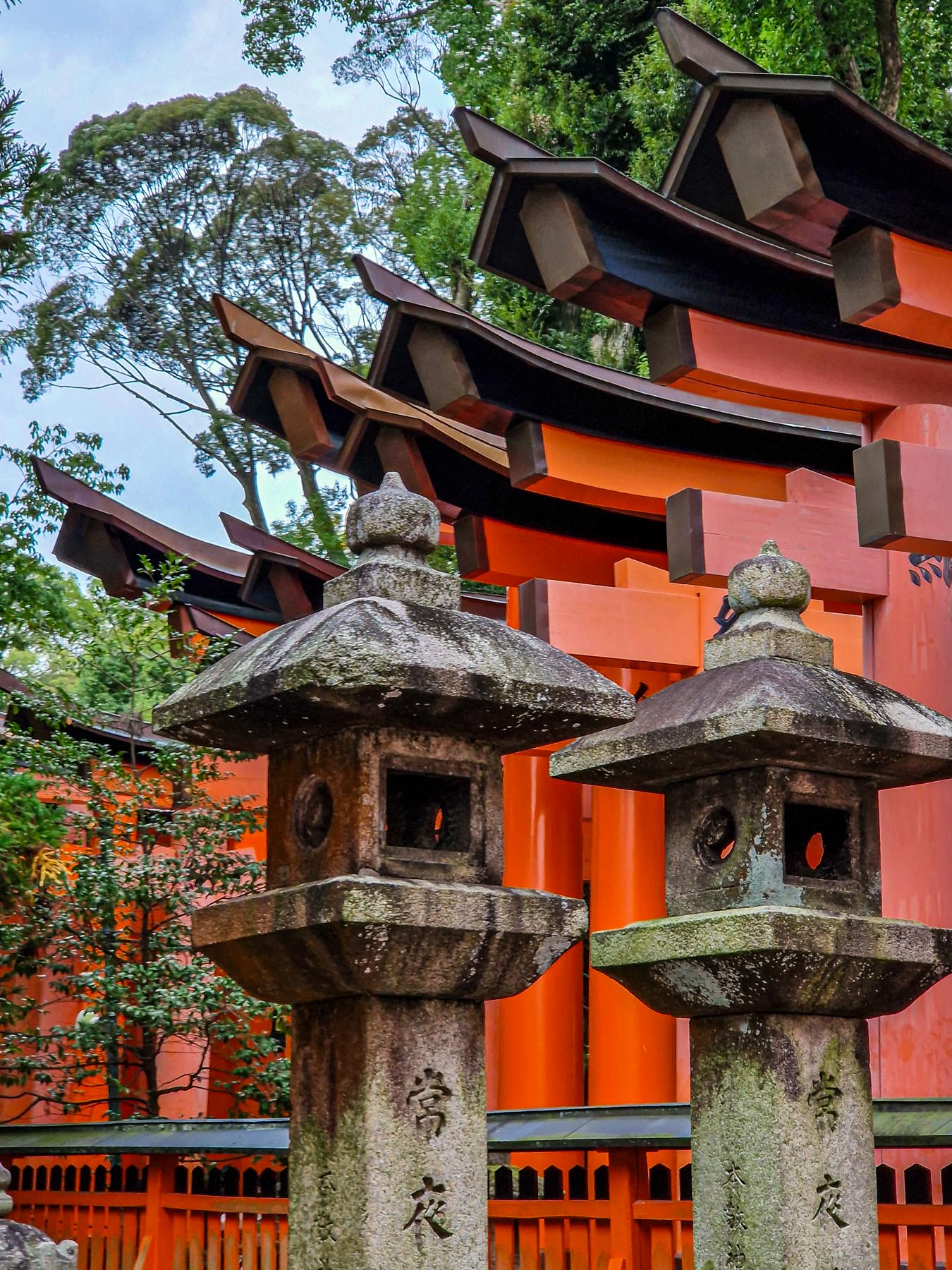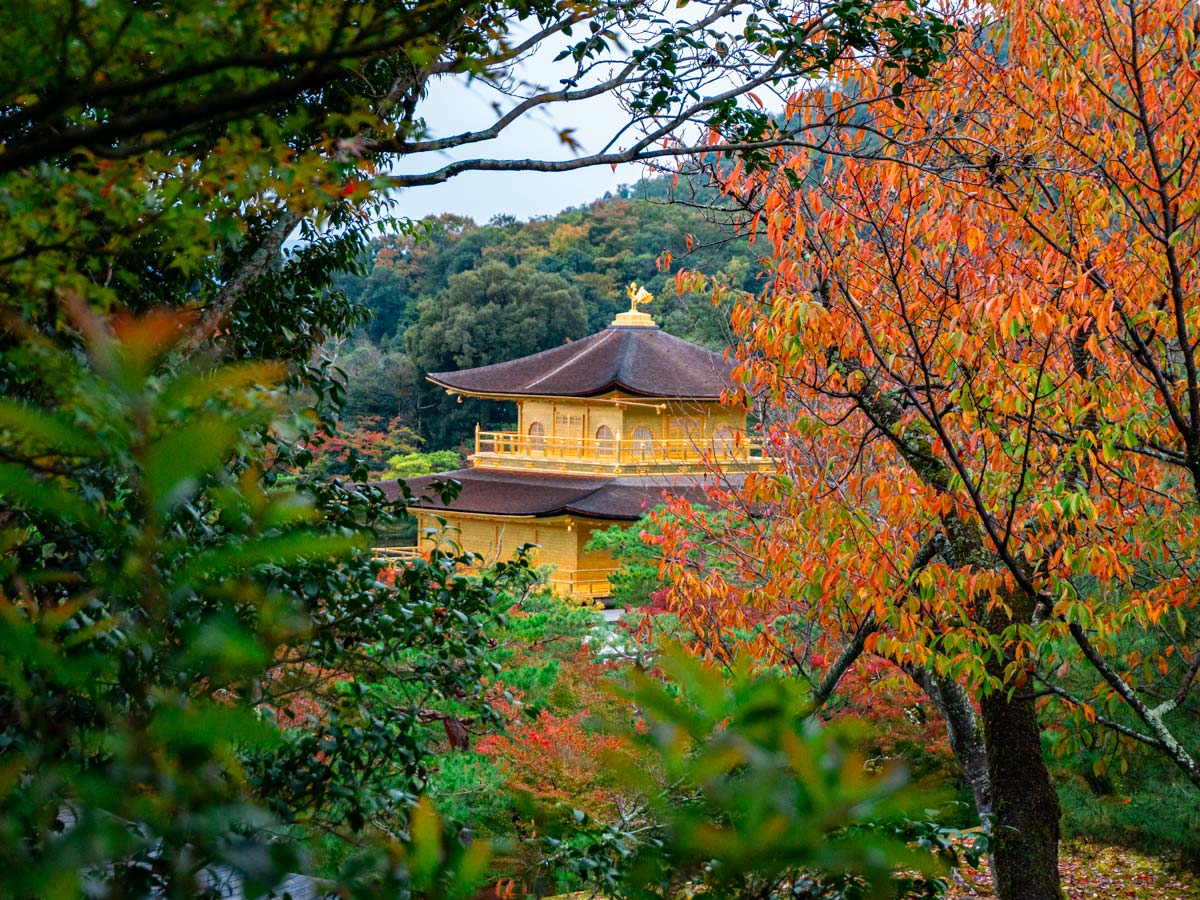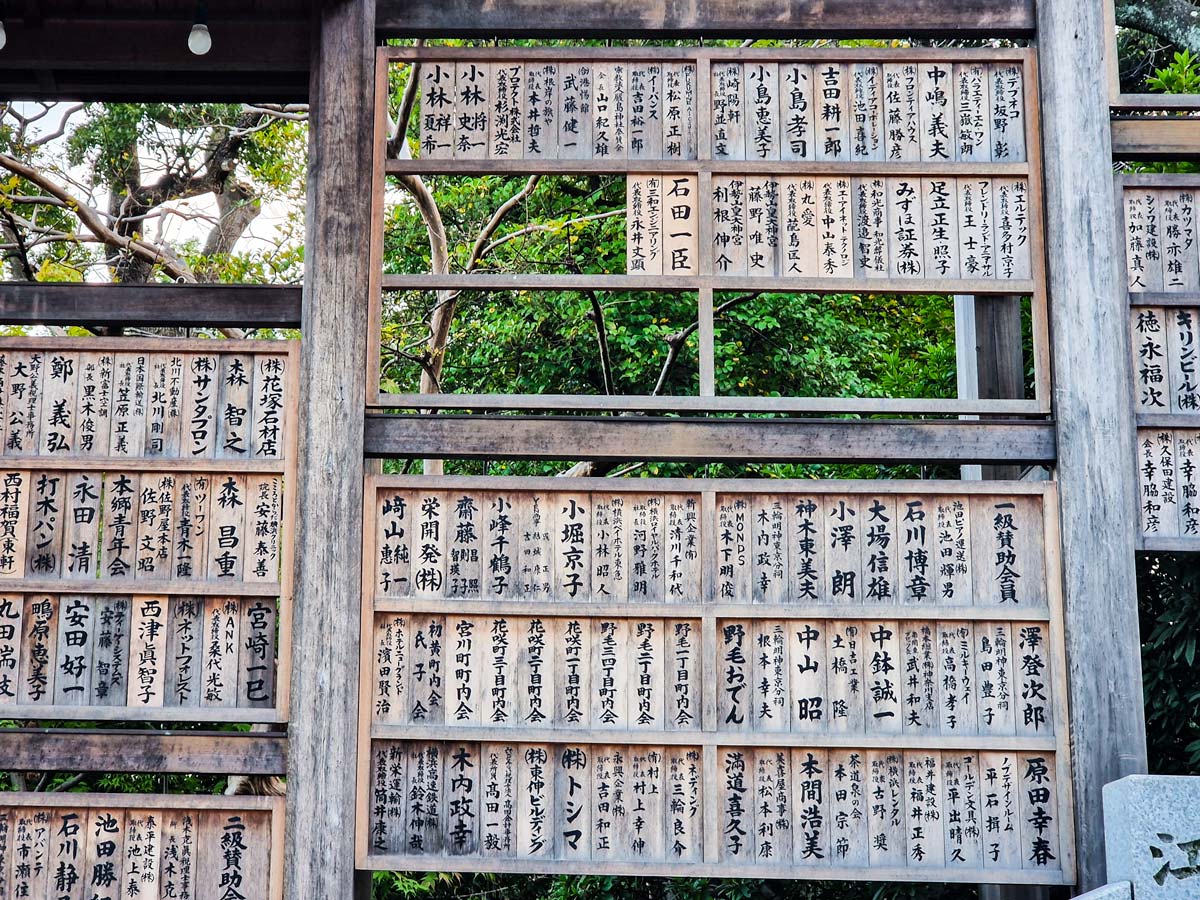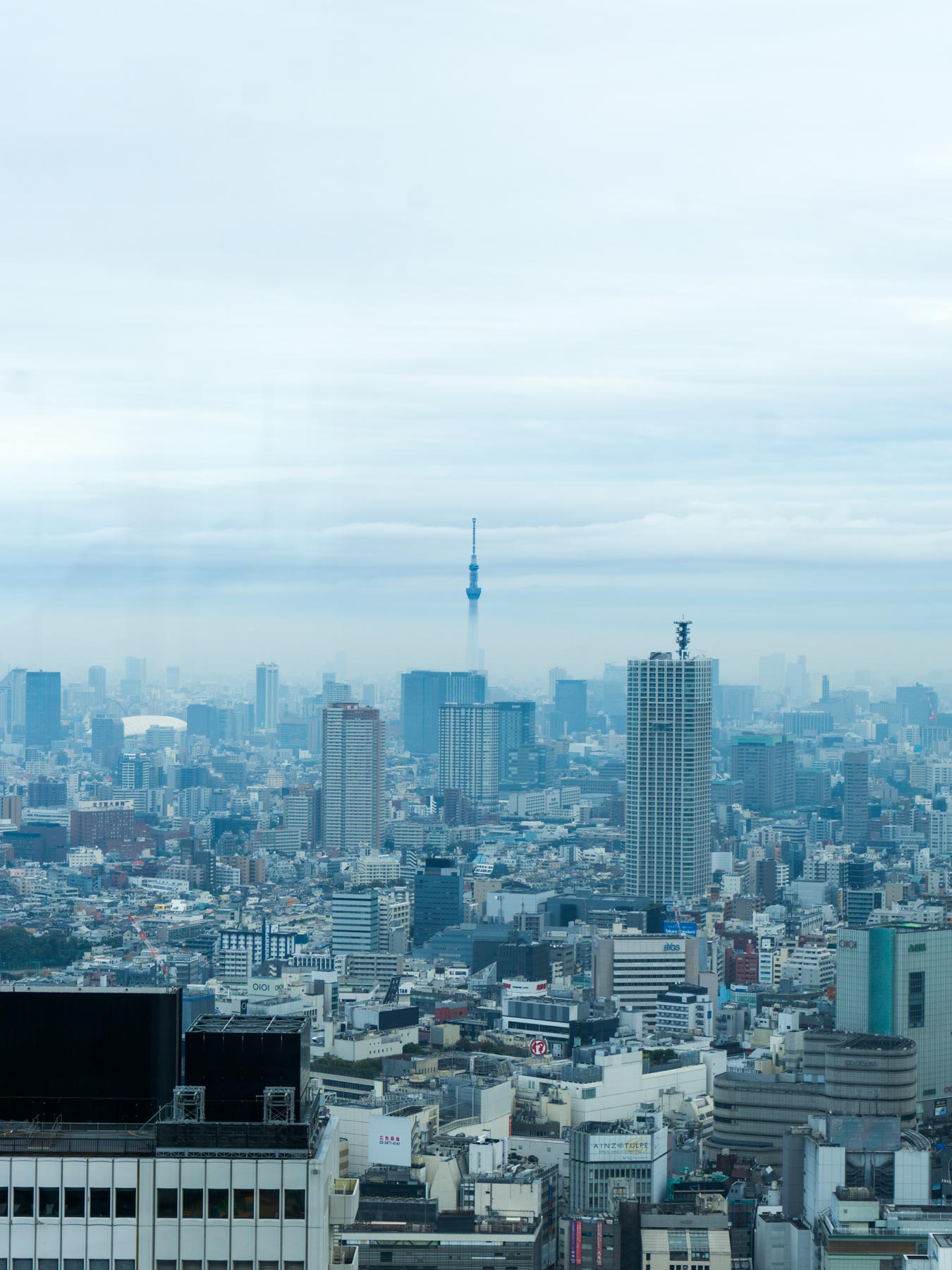
The post-holiday blues are still in play and honestly, it’s here to stay with no end date. I’m always reminded of it in my day-to-day life. I’ve said it once and I’ll say it again, Japan was an epic trip. With planning, there are always a lot of questions about planning, money, transport and everything else. I’ve collated over 100 tips for Japan from experience and what I’ve read and adhered to. I’ll keep adding more when something else comes to mind while I’m still scrapbooking my travels. I hope what I have is enough to cover any questions you may have or at least, find it insightful!
Contents [HIDE][SHOW]
Before Flying – Preparation
- Buy an eSIM and set it up before arriving. We used Ubigi. Airalo is another popular choice. If your phone doesn’t support it, a pocket WiFi is your best bet and you can pick one up at the airport.
- Fill out the immigration and customs form online at Visit Japan Web and you’ll be presented with a QR code to speed up the immigration process. You don’t need to fill out the immigration form they hand out on the plane.
- Learn basic Japanese phrases.
- Also, learn the Japanese number hand signs.
- Rather than staying in hotels throughout your whole trip, book a ryokan, a traditional Japanese inn.
- Use My Maps and Google Sheets to plan and map out your trip.
- When planning your itinerary, explore by area and the surroundings to save yourself from travelling from one end of the city to another to save time.
- Book hotels near metro stations. Ideally, look for stations with a direct route to the airport or train station if you plan on going to other cities.
- Start walking months before you fly. You’ll underestimate how much walking you’ll actually do in Japan.
- Download the Japan Wi-fi Auto Connect app so you can automatically connect to the nearest Wi-fi hotspot. Android | iOS.
Packing
- Double-check what toiletries and amenities are available at the hotel so you know what not to pack.
- If your hotel has laundry, don’t pack too many clothes.
- Buy compression cubes so you’ll have more space in your suitcase. These were a lifesaver for us.
- Pack comfortable footwear – 2 pairs so you can alternate between the two.
- The most common plug type is type A (2 flat pins) so pack the relevant plug adapter.
- Pack a suitcase inside another. “I won’t be buying much” as they all say…
- If you attract mosquitos, pack some repellant.
- Pack a power bank and carry it with you everywhere.
- Some prescriptions and OTC are illegal in Japan as they contain a banned ingredient(s). For some medications, you can bring up to a month’s worth of supply, any more and you’ll need to apply for a Yunyu Kakunin-sho. This is very topline so you’ll need to do your due diligence.
- Pack and carry some soap sheets and hand sanitiser as not all toilets have soap or a hand dryer.
Navigation
- Google Maps is still king as it will tell you which train/metro platform to take where possible as it can be a struggle to know which direction to take. It can also tell you which station exist to take.
- Japan Time by Navitime (Android | iOS) is also a great alternative to Google Maps and can be better.
- Navigating around big stations like Shinjuku can be overwhelming as you may not see the exact exit on the signs until you walk from one part of the station to another. It depends on what lines you have taken and what part of the station you arrive at. Remember your compass directions, NESW, and apply it e.g. if you need the southeast exit and it’s not on the signs, follow the east exit where you’ll eventually see signs for the southeast exit.
- Unlike the UK, the ground floor is 1st floor in Japan so you don’t get confused when you cannot see G in the elevator
- Download a translator app. Google Translate and Google Lens are both great. You can use it to translate text and when asking for help.
- Get lost, be spontaneous and find hidden gems. You’ll never know what you might encounter.

Transport
- A taxi is a great way to go directly to your hotel after a long flight. We booked through Booking.com after booking the hotel.
- The airport limousine is a great alternative to a private taxi or metro.
- Grab an IC card as it’ll make your life easier so you don’t need to buy metro/JR train tickets. Suica is a popular option. For iOS users, download the Suica card in Apple Pay. For other OSs, grab a Welcome Suica card when you arrive. I’d recommend checking JR East site for updated locations. Other IC cards are available too e.g. PASMO, ICOCA.
- Depending on your itinerary, the JR pass isn’t worth it. You can use the calculator to see how much the total of your train tickets (including Shinkansen) are and use it as an estimate to determine if this pass is worth it or not.
- If you’re travelling to your next city with your suitcase, plan to head out before peak time or towards the end of it.
- Don’t always take public transport. Like London, it can be walkable depending on the start and end. Walk where possible if the stations are close by as you’ll find some hidden treasures along the way that you’ll miss if taking public transport.
Shinkansen
- You cannot use the IC card on the Shinkansen.
- Buy your Shinkansen tickets from the official site – smart-ex.jp. You can buy them up to 3 months in advance and it can be cheap when booking in advance. They have an app (Android | iOS) but it’s currently limited to certain countries. Sadly not in the UK.
- Don’t book via Klook because they are the middle man, you aren’t guaranteed the seats you’ve requested and you can’t make adjustments easily.
- If you buy the Shinkansen tickets from the machine or counters, you may get two tickets. You’ll need to put both through the ticket barriers to enter and exit.
- There isn’t too much of a difference between first (green car) and second class (standard). Second class is still spacious and has plenty of legroom.
- Assign the Shinkansen tickets to your Suica/IC card so you can go through the ticket barrier easily.
- Only purchase the oversized seats if your luggage height, width and length total is greater than 160cm as there’s an oversized luggage area behind the seat and a compartment. Otherwise, you can place them above.
- If you’re heading towards Osaka via the Shinkansen, sit on the right to have a chance to see Mount Fuji. When heading towards Tokyo, sit on the left.
Train/Subway and Buses
- When catching the bus in Kyoto, you board at the back and pay as you exit at the front. They accept Suica/IC cards and exact change. If you don’t have the exact change, there’s a change machine at the front too. It’s a fixed price when travelling within the vicinity.
- Some train lines will change to other lines but it still goes to the same destination e.g. Asakusa station to Haneda Airport – Asakusa line to Keikyu line. You just stay on. As long as you look at the destination on the train, you’re OK.
- If you catch a limited express train, you’ll need to pay extra on top of your base fare so you’ll need to make sure you’ll have the correct supplementary ticket. For rapid express trains, you don’t need a supplementary ticket. I find both have roughly the same journey time.
- Local trains stop at every stop and are slower.
- Stations have lines and number abbreviations so it’ll be easy to look out or listen for e.g. Asakusa station on the Asakusa line is A18. If the station has many lines, the numbers won’t be the same, e.g. Shinjuku has many lines – Shinjuku station line is S01, Oedo line is E27, Marunouchi line is M08 etc.
- You don’t need to take the Shinkansen between Kyoto to Osaka. You can take the JR train and can take you from A to B in 30 minutes or less. It’s also cheaper.
Attractions
- Embrace and appreciate your surroundings, looking up and down. Don’t just rush through. You’ll miss the finer details.
- If you’re collecting goshuins, pay your respects first. If you forget your goshuin book, you can buy paper goshuins to stick in. I’ll do a separate blog post on this.
- Research the difference between goshuin stamps and eki stamps. The former requires special books and you cannot put eki stamps in.
- When planning your trip to Mount Fuji, be flexible on dates and check the weather when you arrive. Book bus tickets asap especially your return tickets. Taking the bus is more convenient than the train.
- Getting tickets for some museums is a lottery draw e.g. Nintendo Museum, or Studio Ghibli Museum, and you’ll need to make sure you sign up or queue up once the tickets are released 1-3 months in advance. It’ll vary for each museum.
- Some popular tourist attractions can sell out quickly and only have very limited tickets on the door on the day. It’s best to buy in advance as they will sell out quickly e.g. Shibuya Sky.
- You won’t be able to visit every attraction, restaurant, shrine etc you have favourited and it’s OK. Stay flexible and don’t get hung up on missing spots.
- The major cities are great for first-timers but also do check out the countryside, lesser-known cities etc.
- Go to the tourist information center in the area and pick up some leaflets as there may be some events and attractions you’ve never heard of around the area. Also, there may be some coupons too.
- Don’t rely too much on Instagram or TikTok for hidden treasures. What is meant to be a hidden treasure isn’t so much now.

Eating & Drinking
- Don’t underestimate Konbinis (convenience stores) such as 7-11, Lawson and FamilyMart. The egg sando and originis are amazing. You can buy snacks, drinks, smoothies, hot food etc. It is a quick way to grab food and a cheaper alternative.
- Don’t eat whilst walking. It’s considered impolite.
- If you need to reserve a table, use Tabelog. You may need to book months in advance.
- Over 3 stars on Tabelog is considered good/very good. Over 4 is exceptional.
- Do try izakayas and grab some drinks. Stay for the atmosphere. Don’t expect to have a full dinner there as it’s not for that.
- Skip restaurants that are all over social media as you’ll be queuing for over an hour. Avoid the hype and save your time
- Don’t always google places to eat as some are tourist traps. Eat where the locals eat.
- You will never be thirsty. Vending machines are literally everywhere, you’ll see at least 3 on one street.
- Many restaurants and stores don’t open until 10/11 am.
- Highball and lemon sour are the local’s drink of choice if it’s not beer. It’s cheap so it’s easy to drink a lot of them in one sitting.
- If you are eating food from a food stall vendor, you can give them the rubbish and they’ll dispose of it for you.
- If you want to try yakiniku (Japanese BBQ), reserve a table in advance. It’ll be hard to get one when you turn up without a reservation.
- Japan builds upwards so there are buildings that house many restaurants, bars, and stores so check the address to check you have the right building and floor. Many buildings will show logos and signs of what is in there, whilst other buildings will have the building name only. It will feel like you’re walking into a random apartment building.
- When you pay, you’ll pay at the cashier counter at most restaurants.
- You can also grab food from the basement level in department stores. It’s like a food hall and you’ll be drooling looking around, deciding what to eat.
Shopping
- I mentioned the IC card earlier, you can also use it to pay for food, shopping, and meals at restaurants, and anywhere that accepts IC cards. If you don’t know if IC cards are accepted, ask or look for the IC logo.
- Local Japanese brands like Uniqlo, Muji, and Onitsuka Tiger are much cheaper in Japan than in the UK. It’s not limited to just fashion meaning it’s the same for beauty, stationery or any Japanese brands for the matter of fact.
- Some Japanese brands sell items that aren’t available in branches outside Asia e.g. Muji and Uniqlo.
- Apple products are cheaper in Japan.
- Trainers are also cheaper in Japan – you can save at leave £20.
- Japan’s sizing is smaller. Some brands will have Japan size e.g. Adidas so it’ll be worth trying clothes on.
- Some global brands sell Japan exclusive only items e.g. Adidas. Check them out as you won’t be able to get them outside of Japan.
- When trying on clothes, you may receive a covering for your face. It’s to stop the makeup from transferring onto the clothes.
- You may need to remove your shoes before stepping into the changing room. There are generally signs telling you. If not, if you see carpet or a raised platform, then take your shoes off.
- Try and do most of your shopping towards the end of the trip.
- Check out Tokyu Hands, Loft, 3Coins, Daiso, Don Quijote and Seria for unique souveniers.
- Don Quijote is hectic in the evenings and has long queues that snake around the aisle for the tax-free counter. Shop in the morning, it’s much more peaceful.
- When buying food as souvenirs, check the expiry date (YYYY-MM-DD). Some foods like Tokyo Banana, Royce’ chocolates will have a shorter life span. It’s better to buy these at the airport before you leave.
- Check out second-hand stores and you’ll find some nostalgic and random items.
- There are a lot of vintage clothing stores out there.
Tax-Free
- You can get tax-free in many stores when you spend over 5500 yen in one go. You’ll need to show your passport at checkout or dedicated checkouts. This applies to tourists or those with a short-term visa.
- There are some stores that offer tax-free but you’ll need to pay full price first and then go somewhere else to claim it.
- If they seal it, you cannot open it until leaving Japan otherwise you will pay tax. This is for consumables such as food, skincare etc.
- Non-consumables are not generally sealed, you can use/wear them e.g. clothes, suitcase.
- Not all branches of the same store offer tax-free so research which stores to visit.

Customs and Manners
- Bring your passport with you. You can get randomly stopped by the police. Although it doesn’t happen often, it’s not worth the risk.
- In Tokyo, you stand on the left of the escalators and in Osaka, you stand on the right.
- Learn about the local customs and manners or if you’re unsure, exhibit the locals near you.
- Learn the correct etiquette when visiting temples and shrines.
- Learn the correct onsen etiquette too.
- Be respectful of their culture and don’t do anything stupid just for the ‘gram/TikTok. If the locals don’t do it, you shouldn’t either.
- Don’t talk loud on public transport.
- Do not tip.
- If something isn’t available, the restaurant is full or just simply a no, they may cross their hands to symbolise this. It is the equivalent of shaking your head.
- No jay walking. Wait until the red man turns green.
- Do not take photos of or touch geisha and maiko around Gion in Kyoto. They are working and it’s considered rude.
- If there’s a sign telling you no photos, tripods or selfie sticks are allowed, respect it.
- Smoking on the streets is prohibited unless you’re in a designated smoking area.
Money
- It is still a cash orientated country. Always have cash on hand as there will be stores and restaurants that don’t accept cards. Temples and shrines don’t accept cards (credit/debit/IC card) and are strictly cash only.
- IC cards aren’t widely accepted everywhere in Japan, only in specific areas and if you’re visiting the major cities, you’ll be safe otherwise, one word – cash.
- Where cards are accepted, you can use contactless. You may need to use chip and pin if you go over the maximum limit your contactless payment allows per transaction e.g. £100 for many UK banks.
- Head to 7-11 to cash out yen in their ATMs. You’ll have the option to select yen or your local currency but always select yen as it has better rates and will save you some money.
- There’s also the option to withdraw 10000 yen in 10×1000 notes which has been very helpful if you don’t want to carry large denominators.
- Have a coin purse or a change holder, you’ll be surprised at how much change builds up over the days.
- Spend your change otherwise you’ll have a bag full of them. You can easily spend them at convenience stores, temples, or just for small purchases.
- When paying by cash, don’t pass it directly to their hand but place it in the tray instead.
- 100 yen coins are king as machines and lockers (excluding vending machines) may only accept 100 yen coins e.g. Gachapon, crane machines, and coin lockers.
- If there are two prices on the tags, the lower number is before tax, the higher number is after tax.
Others
- There are toilets in shopping centres, cafes, temples, parks, the majority of train stations etc.
- Take advantage of the luggage forwarding service by Yamato so you don’t need to carry your suitcase onto the train and drag it around. Most hotels can help fill it out for you so your suitcase will be delivered directly to your next hotel. You can also get it delivered to the airport to collect on the day you leave before check-in.
- Carry a plastic bag or reusable shopping bag to store any trash you may have accumulated as there are no trash bins on the streets.
- Coin lockers are useful to temporarily store luggage as not all hotels offer all-day storage luggage. Some lockers will be cash only (only accept 100 yen coins) whilst some accept Suica/IC cards.
- The weather can fluctuate throughout the day so keep an eye on the weather forecast so you know how to dress.
Pin for Later

上一篇
下一篇